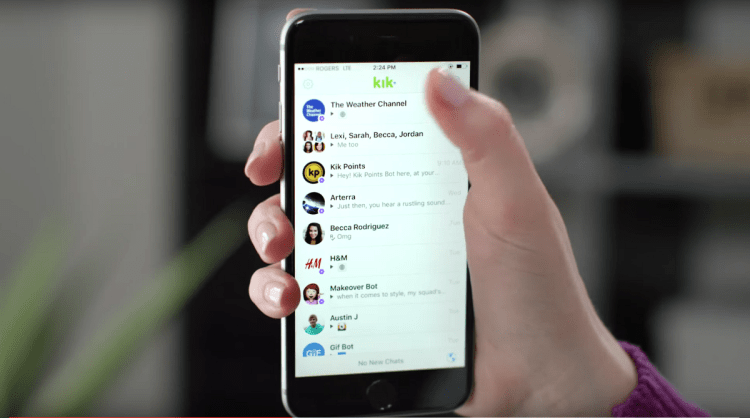It has been four months since we launched the Kik Bot Shop and Facebook opened its bot platform for Messenger. It’s been about the same amount of time since the hype around bots was at its peak, with Microsoft CEO Satya Nadella predicting that bots would be as big as apps. Since then, the hype has cooled, with some people now wondering why bots suck and politely asking to not be exposed to them.
At Kik, we’ve noticed the same thing as everyone else: So far, there hasn’t been a killer bot. This is not yet the world promised by the early hype. Then again, we’re only four months into this. The bot ecosystem is at an earlier point now than the App Store was before Apple introduced in-app purchases. The game lasts longer than the first pitch.
Since we opened our bot platform to developers in April, more than 20,000 bots have been built for Kik. We’ve learned a lot. One of the things that has become increasingly clear is that the initial discussion about bots being powerful because of their conversational potential was somewhat misguided. It’s certainly possible to imagine a world in which we routinely carry out human-like conversations with robots to get things done or to be entertained, but we don’t yet live in such a world. In fact, I believe we’ll look back at the early emphasis on “conversational commerce” as a mistake.
Part of the misfire with the conversational aspect of bots has to do with the fact that natural language processing and artificial intelligence are simply not as accomplished at managing human-like conversations as humans are. Sam Lessin, formerly of Facebook and now the co-CEO of Fin, recently outlined this challenge. “None of the bot frameworks that big companies have released or endorsed, like wit.ai, are close to being ready for prime time,” Lessin wrote in his column for The Information. This view is similar to the conclusion I had reached when, in March, I wrote that the future of chat isn’t A.I. and that instant interactions are key.

It’s also important to note that we don’t think bots are going to replace apps any time soon. That’s not the point. The point is that people are increasingly spending their time in chat apps, so we’re building experiences inside chat that allow people to do more while they’re there. That’s why bots are so interesting.
The good news is that bots are useful even without the conversational element. They have other advantages. To name a few:
Less friction: Messaging bots are easier to use for the first time than apps are. There’s no new app to download, no new account to create, and no new interface to learn.
More discovery: On Kik, you can find bots in the Bot Shop or you can scan a Kik Code to start chatting with them. We’ve also rolled out ways for bots to spread organically — something that hasn’t really been possible with apps — through “mentions” and “invites,” which allow you to bring a bot into a chat with friends or to choose people from your contacts to give bots permission to connect with.
Consolidation: Instead of having a hundred seldom-used app icons on your homescreen, you can access all the bots you need in a lightweight way through a single chat app.
Social graph: With chat apps like Kik, bots get the benefit of automatic integration with your social graph.
Apps in the message: Instead of adding a messaging layer to every app, bots bring apps into messaging. This role reversal puts the thing that people do most commonly everyday — messaging — at the center of their digital experience.
When you look closely at WeChat, the chat app that has completely taken over China, you see that its success as an ecosystem of services comes down to the same things: low-friction access to apps, sharing-related discovery (as well as QR codes), a common interface, and messaging as the front door to a world of digital experiences. In fact, there’s no major conversation-based service in WeChat. Instead, there are just a whole lot of instant interactions.
We’re excited about how bots are coming along on Kik. Our users have exchanged almost two billion messages with bots since April. But we are fully aware that these are the early days. There are still many pieces of the platform that need to fall into place, payments not least among them. Good things take time. The Pokémon Go moment for bots is still to come.
In the meantime, developers who are considering getting into bots have a choice: They can wait to see what happens and jump in when the picture becomes clear, or they can get started now, while the ecosystem is in its nascent stages, and get a head start. It’s easy to get started.
This post originally appeared on Medium.com; we have made minor edits.
VentureBeat's mission is to be a digital town square for technical decision-makers to gain knowledge about transformative enterprise technology and transact. Learn More

